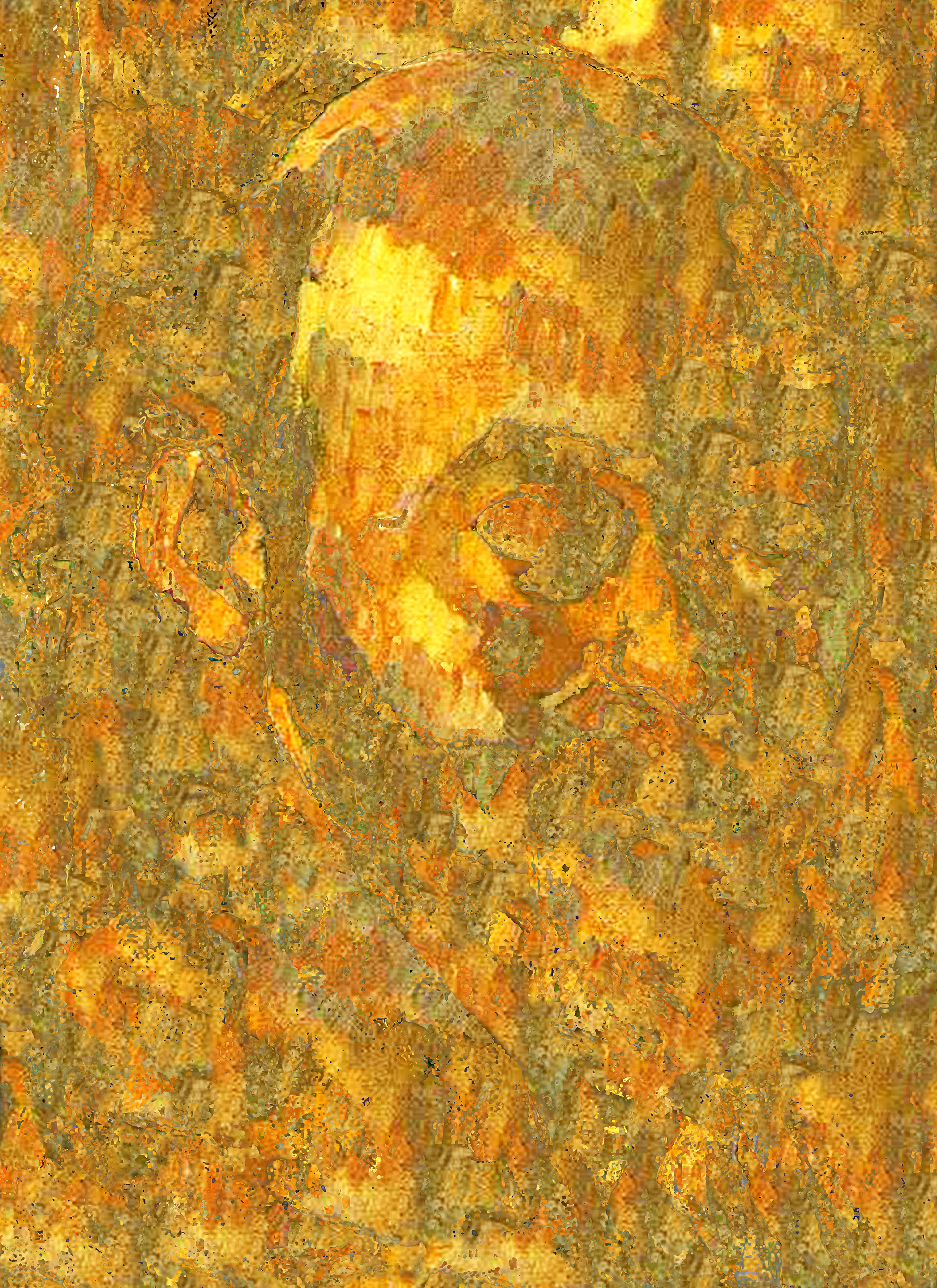Alumnus Allan deSouza reworks famed masterpieces to explore feelings of displacement

“Cezanne” by alumnus Allan deSouza is now displayed at Fowler Museum. (courtesy of Talwar Gallery, NY)
“HIS MASTERS’ TOOLS”
Through May 29
Fowler Museum, FREE
By Madeleine Flynn
Jan. 23, 2011 11:28 p.m.
Something about the colorful, pixilated print is familiar, and yet, it’s not immediately clear why.
Then the faint outline of Paul Cezanne’s face emerges from the yellow, red and green patterns.
The piece, “Cezanne,” is a digitally altered version of Cezanne’s famous self-portrait and hangs along similarly remastered works of some of the most well-known names in Western art.
The artwork is part of “His Masters’ Tools,” an exhibition currently on display through May 29 at the Fowler Museum.
The exhibition shows the works of UCLA alumnus Allan deSouza, who was born in Kenya and who eventually came to the United States, where he received his master’s degree from UCLA in 1997. DeSouza currently works in San Francisco.
DeSouza returned to Kenya in 2002, but according to Steve Nelson, associate professor of African and African American art history and a co-curator of the show, the trip was not the homecoming the artist expected.
The experience, Nelson said, influenced much of the artwork on display in the exhibition.
“It’s work that is about home,” Nelson said. “It’s also work that’s about seeing. And so, he goes home, and he can’t see home. … And seeing, then, takes center stage in these manipulated photos.”
On one wall are blown-up prints of photos taken by deSouza’s family in the 1960s that the artist allowed to fade naturally in the sunlight and to collect dust, hair and other debris.
The process, according to Nelson, was an early instance of deSouza’s manipulation of photos.
Sebastian Clough, director of exhibitions for the Fowler Museum, said that deSouza’s openness to the natural alteration of his work was a new experience for him while putting the show together.
“This artist is interesting, because a part of our dialogue was about, “˜Well, what if sunlight hits the print and fades it, or how does the artwork interact with the duration of its exhibition?’ And he’s very open to … having that be part of the story or the destruction of the piece,” Clough said.
According to Gemma Rodrigues, curator of African arts at the Fowler Museum and Nelson’s fellow curator for the show, deSouza’s feeling of displacement and the interplay between the Western and the non-Western world can be seen throughout the exhibition.
“The kinds of ideas or critical approach that he brings to his art practice is very shaped by a sort of cultural politics that’s connected to thinking about the world from the vantage of Africa, and also shaped by this family history of both colonization and decolonization,” Rodrigues said.
Many of the works featured are large prints of famous paintings by Paul Gauguin and Henri Rousseau that deSouza digitally reworked, using Photoshop to pull colors out of the original works and layering them over each other to create new pieces of art.
Nelson said that the process of creating one of deSouza’s pieces takes hard work.
“It’s this unbelievable process. It’s as labor-intensive as if one did it by hand. … They belie the difficulty of their making,” Nelson said.
According to Nelson, deSouza chose to alter paintings by Gauguin and Rousseau because, as European artists who painted non-Western subject matter, they dealt with the themes of displacement and colonization.
These ideas, according to Rodrigues, resurface in two prints of cartoon monkeys in a jungle-like city environment, also on display in the exhibition.
“(The) monkeys invert exactly the Gauguin and Rousseau paintings,” Rodrigues said.
“Instead of the white guy being displaced and seeking this ever-more exotic wilderness, you have this monkey image, who … stands in for Allan and how he feels: somewhat displaced and alienated as a brown person in a Western, predominately white world.”
The same digital manipulation can be seen in a group of smaller works from the series, such as “The Third Eye,” that was created specifically for the Fowler Museum.
The prints are a series of self-portraits by famous artists such as Andy Warhol, Paul Cezanne and Leonardo da Vinci that have been remastered by deSouza.
Despite deSouza’s practice of manipulating original pieces of art, Nelson said that the works are actually a homage to these works.
“It’s not an act of hatred. … I think you could call it appropriation and change and making the master one’s own, mastering the masters, in a way,” Nelson said.
Nevertheless, Nelson said that deSouza’s focus on travel, movement and displacement could connect with many students at UCLA.
“All of these students have some kind of a narrative ““ whether it’s their own or their parents’ or their grandparents’ ““ about arriving here,” Nelson said.
“UCLA is an extraordinarily international and an extraordinarily diasporic place, and I think that this work speaks to those experiences.”


